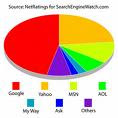The rule of thumb is this: the more competition a relative term has, the harder you'll find it to rank for the term. With that said, you've got to start somewhere and there at least 50 ways I can think of to improve your SEO.
Choose your hosting provider carefully
1. If you're targeting one specific region, say the UK, ensure that the physical IP address is country specific which will improve the likelihood of ranking in the UK
2. Always opt for a fixed IP address even if it costs slightly more
3. Run an IP address search to ensure the IP address hasn't been black listed before. Domain Tools are an excellent source for quick IP address lookup
4. Ensure the server returns accurate response:
* 200 OK The request has succeeded - As an example you should see this server response for your homepage (www.sitename.com)
* 301 Moved Permanently - As an example you should see this server response for your non www version of your homepage (sitename.com)
* 302 Found - Use this server response only if you are redirecting temporary
* 404 Not Found - Always display a correct 404 response so you can get an indication when a page is broken for better user experience
Increase crawl rates because you can never get enough of Google
5. To check when your site was last crawled and indexed, search for site:sitename.com and play with “date range” advanced search options
6. Update the site's content as often as possible. For online retailers, new promotions and offers offer a fantastic opportunity to update their content
7. Ensure pages are loading quickly by analyzing your code, content and images. Web Page Analyzer is an excellent source to analyze a page load time
8. Fix duplicate content issue such as having two versions of your homepage, for example www.sitename.com and www.sitename.com/index.php
9. Add an XML site map and submit it to the major search engines
Ensure image optimisation across the site to enjoy traffic from Google image search
9. Keep images on a folder level rather than a subdomain so sitename.com/images/ is better than images.sitename.com
10. Use a descriptive name for the image, such as the product name
11. Use alt text for all your images and use a descriptive name again for the image alt text name
12. Use caption by placing a small description directly under, on top or on the side of your image
13. When possible save the image as jpg format
14. Use a free tool such as xenu to find images with no alt text
Ensure metadata optimisation to get high level of qualified traffic
15. Ensure that every page has unique metadata in terms of page title and page description
16. Limited page title to 70 characters and page description to 150 characters
17. Don't bother too much about keywords, do something else
18. Optimise each page around one key term
19. Place the most important term first, followed by a soft (non spammy) call to action and brand
20. For product pages, opt for an auto generate metadata solution based on
21. Use AdWords ads to test the best text for better CTR by creating a few ad variation in AdWords which include your key term
Content is truly king
22. Every page should have unique content which reads well for users (and therefore for the search engine spiders as well)
23. Don't repeat the key term more than 3 times so to avoid keyword stuffing
24. Place the key term in the page H1 title, image alt text and once in bold
25. Use "recommended products" to link between similar products to increase their relevancy
Apply essential URL and coding tweaks
26. Use robot.txt to block parts of the site you don't wish the engines to index
27. Offer an HTML site map which is auto updated based on the XML site map
28. For sites running on PHP use an .htaccess file to avoid content duplication
29. Use breadcrumbs navigation across the site for better user experience and SEO
30. From time to time, view your site using a text browser such as SEO Browser to "see" how spiders are likely to find your on page content
31. If your site architecture has more than three levels, restructure it so to make the information more accessible to both users and spiders
32. Keep URLs short for better SEO and to create a better viral effect as short URLs are more memorable
33. Include your key term such as a product title in the URL
Apply essential maintenance from time to time
34. Fix all your 404 errors and consider redirecting to a more appropriate page
35. When products are removed from stock or discontinued ensure that a 301 is placed to the main category or to a similar product
36. When linking to another site, consider checking whether you're linking to a bad neighborhood using a free tool such as text link checker
37. If you have multiple domains unify around one domain using a 301 redirect taking into account links pointing to each domain, domain age and the domain name
The Google PageRank issue
38. Don't pay too much attention to Google PR as it won't effect your ranking
39. If you want to control page rank, use a nofollow HTML attribute on pages such as "terms and conditions", "privacy policy" etc
Content is king, so start blogging
40. Place your blog on a directory level so www.sitename.com/blog/ rather than a sub domain blog.sitename.com
41. Blogging at least once a week will help increase your crawl rate
42. Read The Definitive Guide To Higher Rankings For Your Blog
Get more links, otherwise no one will see you
43. If you're considering directories as part if your link acquisition, focus on quality reviewed directories such as Yahoo and Best of the Web
44. Don't pay for links, you'll get caught at some point
45. Help your customers help you by placing on each page an easy way to share content using a sharing tool such as AddToAny
46. Ask for links take 1 - place a nice soft request in your website sale confirmation email to link back to your site
47. Ask for links take 2 - ask your suppliers and contractors for a link
48. Give blogger prior notice of new products and ask for a review
49. Offer great products at competitive prices and the links will come organically
50. Kick off a social media strategy to encourage discussion (and links) on social networks and other user-powered sites






























No comments:
Post a Comment